commentary Commentary
Commentary: What the Singapore tourism vouchers are really about
The local tourism vouchers are a smart policy innovation to lift the tourism industry without propping up zombies. And Singaporeans get a vote too.
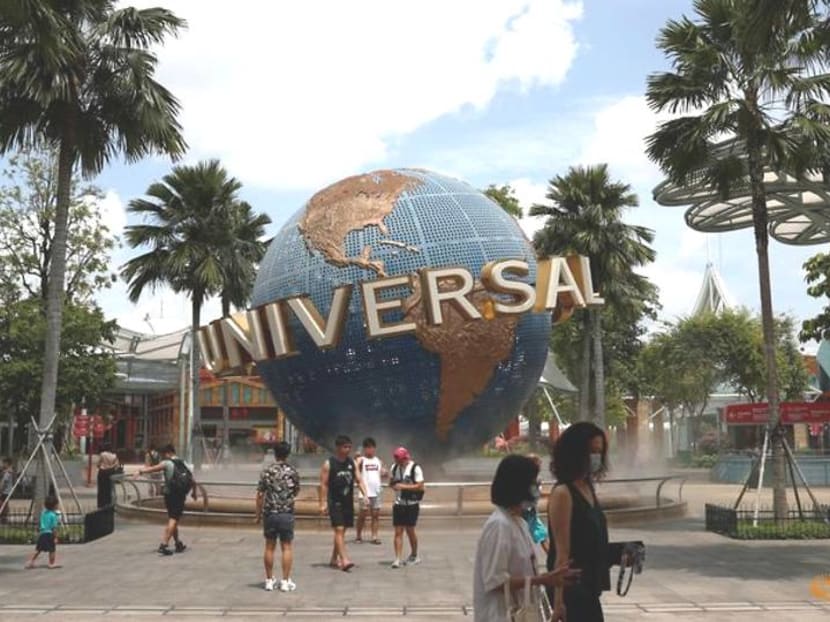
People pose for photos at Universal Studios Singapore in Sentosa. (FILE PHOTO: REUTERS/Edgar Su)
SINGAPORE: Whoever said Singaporeans are a disengaged bunch with few views on national policy matters should see the tide of responses to the latest bread-and-butter saga that is the Government’s COVID-19 aid for the tourism sector.
When news that Singaporeans aged 18 and above could look forward to receiving S$100 SingapoRediscover vouchers, some netizens took to social media to give their two cents as to how the scheme could have been better.
“Why not cash?” said one. What about NTUC vouchers, suggested a few.
And what about the less mobile elderly who can’t enjoy these activities? Or helping those who might have lost their jobs during this pandemic?
READ: Tourism companies preparing strategies to benefit from SingapoRediscovers vouchers
READ: Why wait for your S$100 tourism vouchers? Our picks of discounted activities to enjoy right now
SITUATING LOCAL TOURISM VOUCHERS
The news generated a tsunami of feedback that would make the Government’s public engagement unit REACH tear up. Except that even REACH might not have foreseen feedback to come so fast and furious.
A few swept in to offer perspective amid a barrage of puzzled netizens wondering aloud why they had to wait until December when the initiative was first announced in August and whether more thought had been given to how public coffers could be better employed to benefit people.
“The S$100 is not about you only but to revive the sector,” said one.
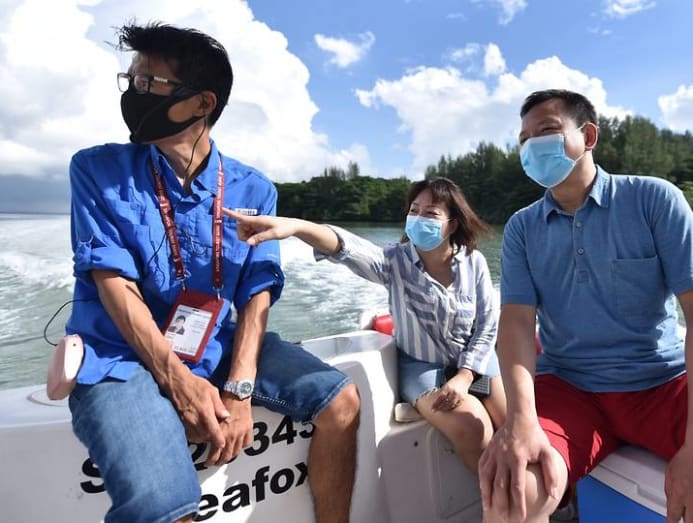
“The initiative is to help boost the tourism industry ... we should be grateful for what we receive,” a sternly worded comment read, with a metaphorical wag of the finger.
Indeed, here’s a first lesson for all us shadow Cabinet wannabes and keen observers on public policy: This one’s not about us.
It’s about the economy.
THE CORONAVIRUS COLLAPSE OF TOURISM
The coronavirus has battered the global economy but there are few sectors that have come under heavy fire as much as travel.
There were early warning signs of an impending collapse in early February just before Singapore went into DORSCON Orange - when big boys like Lockheed Martin and more than 80 other aerospace companies pulled out of the lucrative Singapore Airshow and organisers more than halved public tickets.
An event whose last edition generated S$343 million alone in spending may have been one of Singapore’s earliest casualties.
READ: Commentary: Singapore Airshow in a COVID-19 outbreak – smaller but not quite
READ: Commentary: The outlook for Singapore Airlines has gone from bad to worse
Today, the Singapore Tourism Board’s estimate in February that tourism would fall by 25 to 30 per cent now looks incredibly optimistic in this massive upheaval wrought by COVID-19.
More than S$1 billion has been doled out to save jobs and businesses in travel and tourism these past seven months through four Singapore Budgets and an additional round of support measures announced in August by Deputy Prime Minister and Finance Minister Heng Swee Keat.
Rebates and rental waives for aircraft through an Aviation Sector Support Package that has been enhanced as well as property tax waivers for hotels, MICE (Meetings, Incentives, Conventions and Exhibitions) premises and ports of call, on top of a vast array of broad-based assistance schemes, have been availed to firms in this sector.
A SLOW, PATCHY RECOVERY
Even then, it’s clear changes are afoot and Singapore is shifting gears. As daily community cases ease up and healthcare capacities in contact tracing and testing were strengthened these past few months, operators in this sector watched with anticipation the Government’s moves to carefully open up travel.
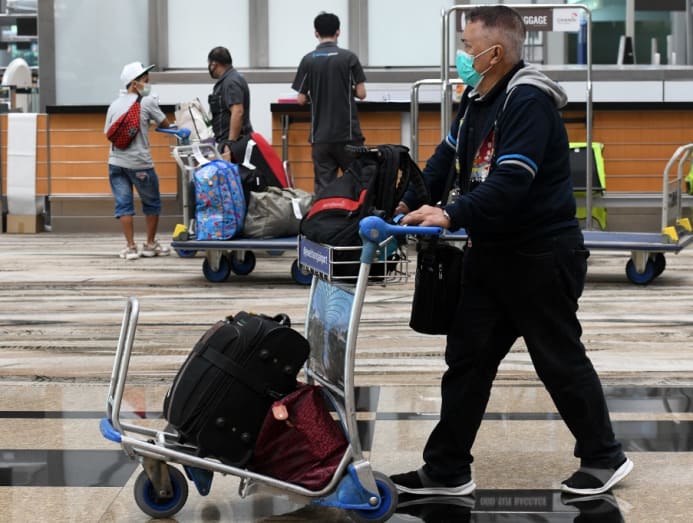
Announcements of Reciprocal Green Lanes for business and official travel with selected countries including Japan and Brunei and the Periodic Commuting Arrangement with Malaysia in August were warmly welcomed.
The unilateral opening of borders is a small cautious step that can resuscitate Changi Airport and show the world Singapore is open for business, said Transport Minister Ong Ye Kung during an announcement in August easing more restrictions. He recognised the need for more travel bubbles.
In the same vein, opening up applications for MICE events with more than 250 people may also prove to be an important stepping stone to welcoming tourists back to Singapore again.
While these moves to gingerly peel back restrictions on travel are to be lauded, however, the drop in foreign visitors may be Singapore’s reality for a while. Changi Airport has seen only 86,000 passengers passing through in July, a 98.5 per cent year-on-year drop.
READ: Commentary: Tourism’s collapse could worsen the economic crisis we face
READ: Commentary: We can’t save the Sentosa Merlion, but can sure protect other aspects of Singapore’s heritage
Even a regime of rigorous testing to replace quarantine requirements could still make the revival of travel challenging, when fear of catching COVID-19 and other countries’ travel restrictions will continue to dampen demand, experts told CNA.
Airlines have it bad in this pandemic but airports have it worse, NUS Business School Associate Professor Nitin Pangarkar pointed out in a commentary for CNA.
And in this picture, it seems tourist attractions in Singapore may have drawn the shortest straw and will need cash infusions to stay afloat.
Enter the local tourism vouchers.
MERITORIOUS MOVE
In industrial policy, governments can provide assistance to businesses in a range of ways to fulfill specific policy objectives - whether in picking winning sectors and firms to advance growth, or incentivising hesitant companies to make certain difficult moves.
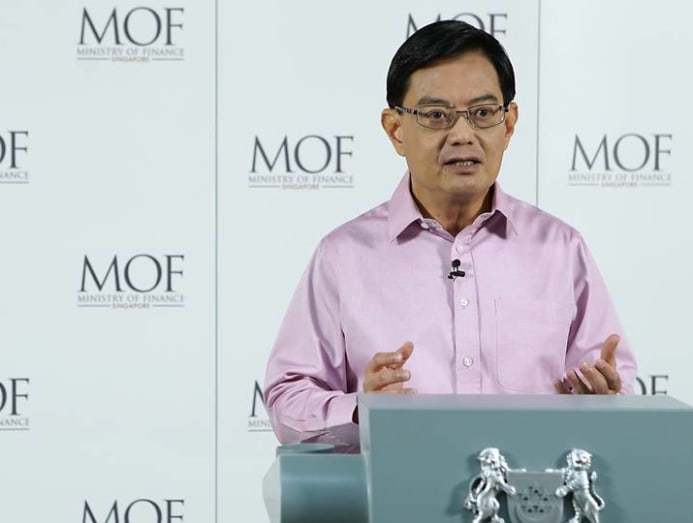
And quite apart from the broad-based measures like the Jobs Support Scheme given to all firms across sectors, in Singapore’s second phase of supporting businesses through the coronavirus there are signs the Government is shifting towards a more targetted approach to make smart bets to help the best performers instead of spreading aid somewhat uniformly across a sector that could inadvertently prop up zombies.
Newer schemes like the Jobs Growth Incentive, rolled out in August, which aims to support hiring in specific expanding sectors like ICT, financial services and biomedical sciences, show how transformation is always on the national agenda.
When the global economic winds pick up, we want to make sure we have our best sails that can catch them ready.
READ: Commentary: Singapore’s steady seven-month plan to get the economy back on track
READ: Commentary: How Singapore can thrive in a world past peak trade, with more regional blocs
What does this have to do with the vouchers you ask?
It’s like giving every recipient a S$100 vote for the best tourist attraction. Parents might want to spend it on annual Zoo passes, while seniors might prefer a trip to the Flower Dome at Gardens by the Bay and youths might want to finally try diving.
Attractions that resonate with more Singaporeans will get a larger piece of the S$320 million pie, which includes subsidies for children and youth tickets.
In a way, tour companies and local attractions have now been entered into an exercise where authorities can track how they’re doing with Singaporeans and reward them proportionately.
It’s an exam few may have signed up for when tourist attractions are generally aimed at drawing foreign visitors. But if hotels have already geared themselves to focus on the staycation crowd, there’s no reason attractions can’t do the same.
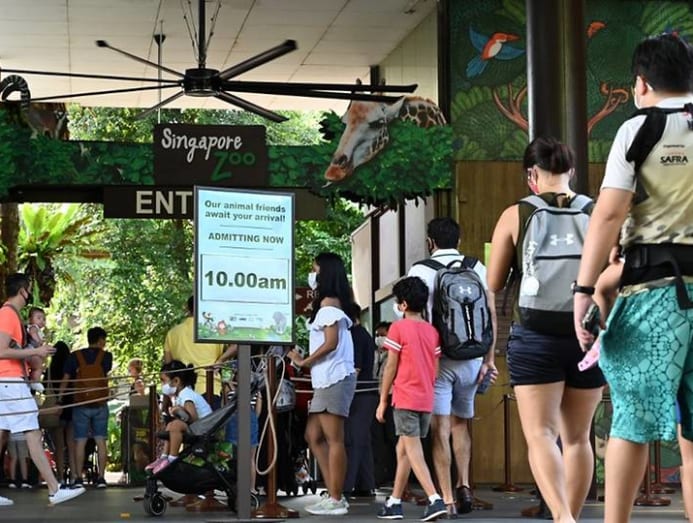
In fact, the challenge ahead for the Ministry of Trade and Industry may be to review the efficacy of such schemes, in particular whether it keeps tour companies and operators open for a few months only to shutter once the pot dries up, and assess whether these funds do generate a multiplier effect in encouraging Singaporeans to spend more than the S$100.
LISTEN: Rethinking the role of national carriers while saving Singapore Airlines
READ: Commentary: Flights to nowhere raise bigger questions about Singapore Airlines’ future
MORE ABOUT US THAN WE KNOW
It’s understandable if Singapore netizens, concerned about the economic outlook and job security, just want more specific help for their families and daily needs and have suggestions on how government assistance can achieve those aims.
The coronavirus has upended our lives – with uncertainty over incomes, anxiety over catching the virus and worries about what tomorrow might bring.
Vouchers that encourage us to holiday can seem at odds with the mood, when Singapore Airlines just announced 4,300 job losses amid a decades high national unemployment rate.
Still, I hope hardworking Singaporeans do find some space in this stressful season to take a break and spend quality time with loved ones.
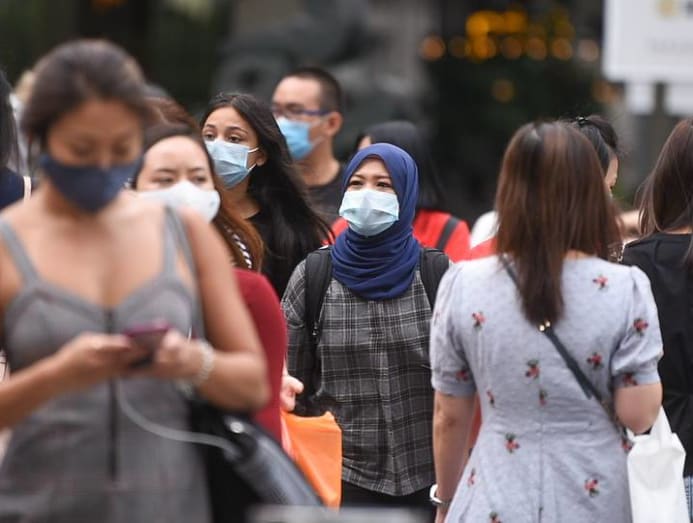
And if you’re at it, why not a trip to the Oceanarium or a visit to a kelong which can go a long way? There is much at stake when the tourism sector employs 65,000 people including ordinary folk like you and I hoping to make ends meet.
In the final analysis, it turns out the local tourism travel vouchers are actually about us more than we know. And we should make each of our S$100 count.
Perhaps it might be useful if the Government proactively articulates how measures to support enterprises benefit Singapore and Singaporeans to tackle binary thinking that industrial policy is necessarily pro-enterprise and less friendly towards workers.
Lin Suling is executive editor at CNA Digital News where she oversees the Commentary section and hosts the Heart of the Matter podcast.





